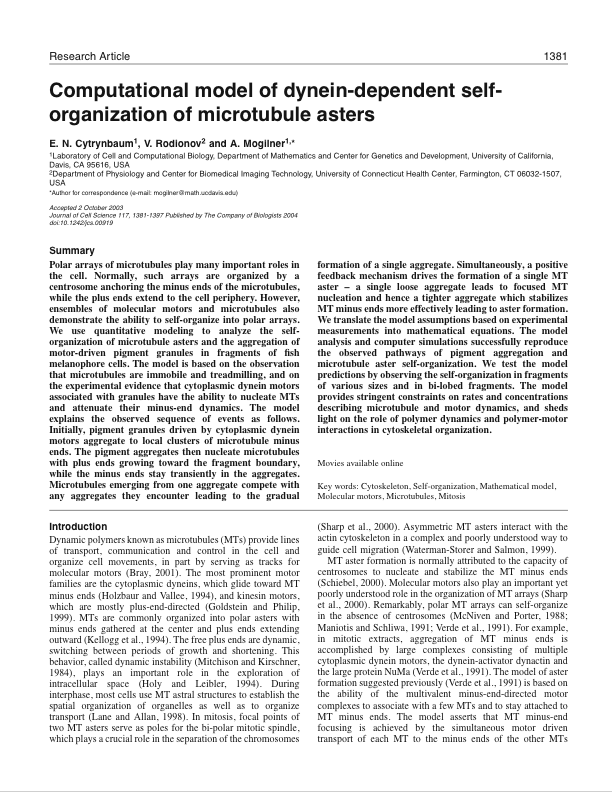Publications
| Abstract | Polar arrays of microtubules play many important roles in the cell. Normally, such arrays are organized by a centrosome anchoring the minus ends of the microtubules, while the plus ends extend to the cell periphery. However, ensembles of molecular motors and microtubules also demonstrate the ability to self-organize into polar arrays. We use quantitative modeling to analyze the self-organization of microtubule asters and the aggregation of motor-driven pigment granules in fragments of fish melanophore cells. The model is based on the observation that microtubules are immobile and treadmilling, and on the experimental evidence that cytoplasmic dynein motors associated with granules have the ability to nucleate MTs and attenuate their minus-end dynamics. The model explains the observed sequence of events as follows. Initially, pigment granules driven by cytoplasmic dynein motors aggregate to local clusters of microtubule minus ends. The pigment aggregates then nucleate microtubules with plus ends growing toward the fragment boundary, while the minus ends stay transiently in the aggregates. Microtubules emerging from one aggregate compete with any aggregates they encounter leading to the gradual formation of a single aggregate. Simultaneously, a positive feedback mechanism drives the formation of a single MT aster--a single loose aggregate leads to focused MT nucleation and hence a tighter aggregate which stabilizes MT minus ends more effectively leading to aster formation. We translate the model assumptions based on experimental measurements into mathematical equations. The model analysis and computer simulations successfully reproduce the observed pathways of pigment aggregation and microtubule aster self-organization. We test the model predictions by observing the self-organization in fragments of various sizes and in bi-lobed fragments. The model provides stringent constraints on rates and concentrations describing microtubule and motor dynamics, and sheds light on the role of polymer dynamics and polymer-motor interactions in cytoskeletal organization. |
|---|---|
| A link to the paper |
 J Cell Sci, 117(Pt 8):1381-1397, 2004. |